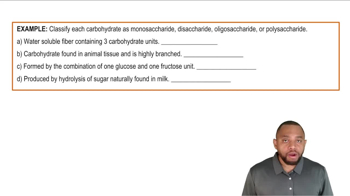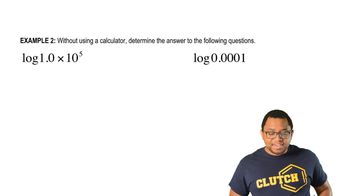Identify the following as containing soluble or insoluble fiber:
(a) oatmeal
 Verified step by step guidance
Verified step by step guidance Verified video answer for a similar problem:
Verified video answer for a similar problem:



 2:37m
2:37mMaster Classification of Carbohydrates Concept 1 with a bite sized video explanation from Jules
Start learning